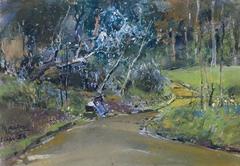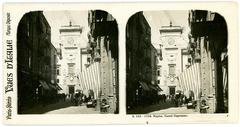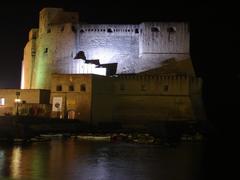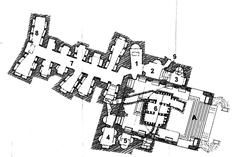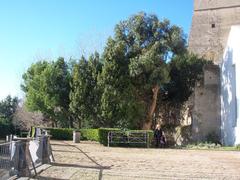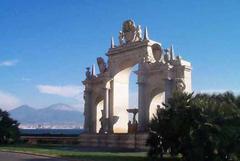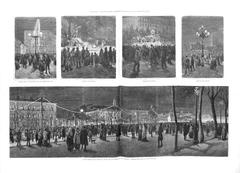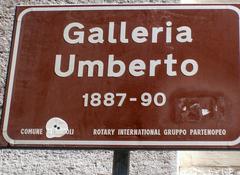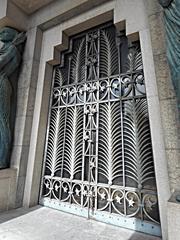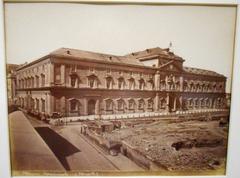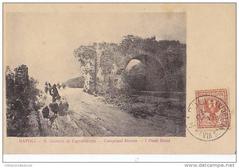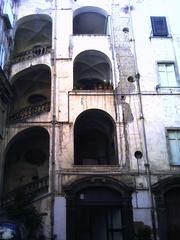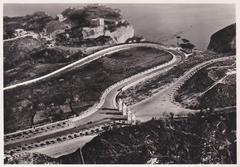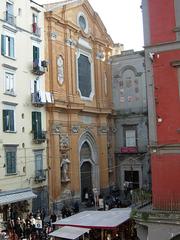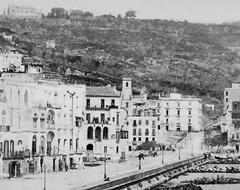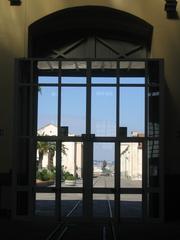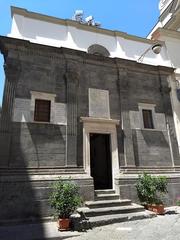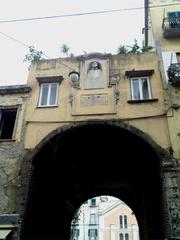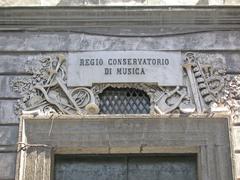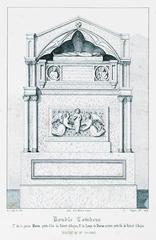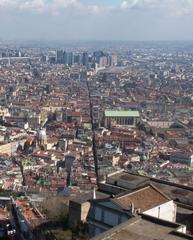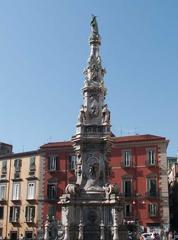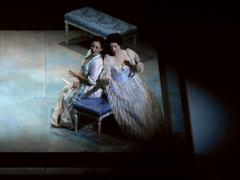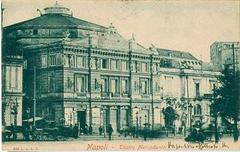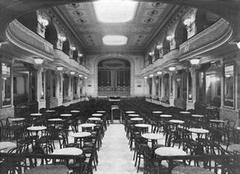Visiting Chiesa di Sant’Anna dei Lombardi in Naples: History, Tickets, and Tips
Date: 19/07/2024
Introduction
Chiesa di Sant’Anna dei Lombardi, also known as Santa Maria di Monteoliveto, is a historical and architectural gem located in the heart of Naples, Italy. Founded in 1411 by Gurello Origlia, a nobleman from the Kingdom of Naples, the church initially served as a monastery for the Olivetan Benedictine monks. Over the centuries, it has evolved through various artistic and architectural transformations, making it a quintessential representation of Naples’ rich cultural heritage (Naples Tourist Guide).
The church is renowned for its remarkable collection of Renaissance and Baroque art, including frescoes by Giorgio Vasari and sculptures by Benedetto da Maiano and Giovanni da Nola. Its façade combines Gothic and Renaissance elements, while the interior showcases a blend of opulent Baroque decorations and intricate stucco work, reflecting the various artistic movements that have influenced Naples over the centuries (Italy Magazine, Baroque Art in Naples).
Today, Chiesa di Sant’Anna dei Lombardi remains an active place of worship and a significant cultural landmark. It attracts numerous tourists and art enthusiasts who come to admire its architectural beauty and historical significance. This guide aims to provide comprehensive information for potential visitors, including the church’s history, notable artworks, visiting hours, ticket information, and travel tips, ensuring you make the most of your visit to this remarkable site.
Table of Contents
- Introduction
- History of Chiesa di Sant’Anna dei Lombardi
- Modern-Day Relevance
- Notable Artworks
- Cultural Impact
- Visitor Information
- FAQ
- Conclusion
History of Chiesa di Sant’Anna dei Lombardi
Origins and Foundation
Chiesa di Sant’Anna dei Lombardi, initially known as Santa Maria di Monteoliveto, was founded in 1411 by Gurello Origlia, a nobleman from the Kingdom of Naples. The church served as a monastery for the Olivetan Benedictine monks, a branch of the Benedictine order known for their dedication to the Virgin Mary and their austere lifestyle (Naples Tourist Guide).
Renaissance Influence
The church underwent significant transformations during the Renaissance period, particularly in the late 15th and early 16th centuries. This era marked a flourishing of art and architecture in Naples, and Chiesa di Sant’Anna dei Lombardi became a focal point for Renaissance artists. The church’s interior was adorned with works by renowned artists such as Giorgio Vasari, who painted the frescoes in the sacristy, and Benedetto da Maiano, who crafted the exquisite wooden choir stalls (Italy Magazine).
Architectural Evolution
The architectural style of Chiesa di Sant’Anna dei Lombardi evolved over the centuries, reflecting the various artistic movements that influenced Naples. The original Gothic structure was gradually transformed into a Renaissance masterpiece. The church’s façade, completed in the early 16th century, showcases a blend of Gothic and Renaissance elements, with intricate stone carvings and a grand portal. The interior features a Latin cross plan, with a central nave and two side aisles, adorned with marble columns and richly decorated chapels (Naples and Beyond).
Baroque Enhancements
In the 17th century, the church underwent further modifications in line with the Baroque style that dominated Naples at the time. The Baroque period brought a new level of opulence and grandeur to the church’s interior. The ceiling of the nave was embellished with elaborate stucco decorations and frescoes depicting scenes from the life of Saint Anne, the church’s namesake. The high altar, designed by Cosimo Fanzago, a prominent Baroque architect and sculptor, is a masterpiece of marble and gilded bronze (Baroque Art in Naples).
Historical Significance
Chiesa di Sant’Anna dei Lombardi holds immense historical significance, not only for its architectural and artistic contributions but also for its role in the religious and cultural life of Naples. The church was a center of religious activity and a place of pilgrimage for centuries. It also served as a burial site for many prominent Neapolitan families, whose tombs and memorials can still be seen within the church (Historical Naples).
Restoration and Preservation
Over the years, Chiesa di Sant’Anna dei Lombardi has undergone several restoration projects to preserve its historical and artistic heritage. In the 20th century, efforts were made to restore the church’s frescoes, sculptures, and architectural elements. These restoration projects aimed to return the church to its former glory and ensure that future generations could appreciate its beauty and historical significance (Restoration Projects in Naples).
Modern-Day Relevance
Chiesa di Sant’Anna dei Lombardi continues to be a vital part of Naples’ cultural and religious landscape. It remains an active place of worship, hosting regular religious services and ceremonies. The church also attracts numerous tourists and art enthusiasts who come to admire its architectural beauty and artistic treasures. Guided tours are available, providing visitors with insights into the church’s rich history and the masterpieces it houses. The church’s ongoing preservation efforts ensure that it remains a cherished landmark for both locals and visitors alike (Visit Naples).
Notable Artworks
Among the notable artworks housed in Chiesa di Sant’Anna dei Lombardi are the frescoes by Giorgio Vasari, which depict scenes from the life of Saint Benedict and the Virgin Mary. These frescoes are considered some of Vasari’s finest works and are a testament to the artistic excellence of the Renaissance period. The wooden choir stalls by Benedetto da Maiano are another highlight, showcasing intricate carvings and detailed craftsmanship. The church also features sculptures by Giovanni da Nola and marble reliefs by Antonio Rossellino, adding to its rich artistic heritage (Art in Naples).
Cultural Impact
Chiesa di Sant’Anna dei Lombardi has had a profound impact on the cultural and artistic development of Naples. It has served as a source of inspiration for countless artists, architects, and scholars over the centuries. The church’s blend of Gothic, Renaissance, and Baroque elements reflects the diverse cultural influences that have shaped Naples’ history. Its role as a center of religious and cultural activity has made it a symbol of the city’s rich heritage and enduring legacy (Cultural Heritage of Naples).
Visitor Information
Visiting Hours and Tickets
Chiesa di Sant’Anna dei Lombardi is open to visitors daily from 9 AM to 6 PM. Admission is free, but guided tours may have a fee. Check the official website for the latest information on tickets and guided tour availability. Photography is allowed, but flash photography is prohibited to protect the delicate frescoes and artworks.
Travel Tips
- Location: The church is located near the historic center of Naples, making it easily accessible by public transportation or on foot.
- Guided Tours: Available in multiple languages, these tours provide in-depth insights into the church’s history and art.
- Events and Exhibitions: The church hosts special events and exhibitions, so check the schedule before your visit to make the most of your experience.
FAQ
Q: What are the visiting hours for Chiesa di Sant’Anna dei Lombardi?
A: The church is open to visitors daily from 9 AM to 6 PM.
Q: How much are the tickets for Chiesa di Sant’Anna dei Lombardi?
A: Admission is free, but guided tours may have a fee. Check the official website for the latest information.
Q: Are guided tours available?
A: Yes, guided tours are available in multiple languages and provide in-depth insights into the church’s history and art.
Q: Is photography allowed inside the church?
A: Yes, photography is allowed, but flash photography is prohibited to protect the artworks.
Conclusion
In summary, Chiesa di Sant’Anna dei Lombardi is a must-visit destination for anyone interested in the cultural and artistic history of Naples. Its rich heritage, spanning from the Gothic to the Baroque periods, makes it a fascinating site to explore. Don’t miss the chance to see its stunning artworks and learn about its historical significance. For the latest updates and more detailed information, be sure to visit the official website or follow on social media (Visit Naples).
References
- Naples Tourist Guide, n.d., https://www.naplestouristguide.com
- Italy Magazine, n.d., https://www.italymagazine.com
- Naples and Beyond, n.d., https://www.naplesandbeyond.com
- Baroque Art in Naples, n.d., https://www.baroqueartnaples.com
- Historical Naples, n.d., https://www.historicalnaples.com
- Restoration Projects in Naples, n.d., https://www.restorationnaples.com
- Art in Naples, n.d., https://www.artinnaples.com
- Cultural Heritage of Naples, n.d., https://www.culturalheritagenaples.com
- Visit Naples, n.d., https://www.visitnaples.com
